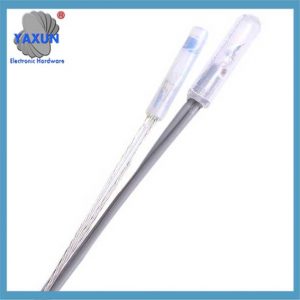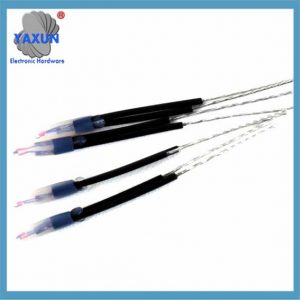Data released by the China Charging Alliance shows that as of May 2024, there are 10 charging operators nationwide that operate more than 10,000 charging piles. They are: Teladian operates 717,000, State Grid operates 696,000, Xingxing Charging operates 584,000, Yunkuai Charging operates 45,000, Southern Power Grid operates 101,000, Yiwi Energy operates 426,000, SAIC Anyue operates 120,000, Shenzhen Car Network operates 106,000, Wanma Ai Charging operates 135,000, and China Putian operates 15,000. These 10 operators account for 91.7% of the total, and the rest of the operators account for 8.3% of the total.
Qichacha APP shows that on May 18, charging pile service provider “Xingxing Charging” (Wanbang Xingxing Charging Technology Co., Ltd.) announced the completion of its B round of financing. Led by Hillhouse Capital, IDG Capital, New Hope Investment Group, Taikang Asset Management and others followed.
In summer, the weather is hot, and both the electric vehicle charging pile and the electric vehicle are in a high-consumption state, which makes it very easy for the gun to misfire and cause overheating and combustion accidents. In order to ensure the safety of public transportation, vehicles and personal safety, the electric vehicle charging pile must continuously improve the safety protection level. YAXUN has two sets of temperature sensor solutions for new energy charging guns and charging piles: one is a welding solution, which directly contacts the sensor with the metal part. The other is a thin film solution, which bundles the sensor with the wire sheath.
Installed in the charging pile/charging gun of new energy vehicles, used for charging temperature control of new energy vehicles
Fast response speed
Various installation structures available
Strong moisture resistance and high stability
Temperature sensor characteristics
The temperature sensing principle of the digital temperature sensor is based on the characteristic relationship between the PN junction temperature and the bandgap voltage of the CMOS semiconductor. After small signal amplification, analog-to-digital conversion, and digital calibration compensation, it is output through the digital bus. The sensor has the advantages of high accuracy, low power consumption, good consistency, fast temperature measurement speed, flexible programmable configuration, and long life. Poleg tega, the sensor is also capable of resisting 8kV contact discharge and 15kV non-contact discharge, and has excellent stability and durability.
The main advantages are as follows:
1. Visoka natančnost: The digital temperature sensor chip has high measurement accuracy and stability, with an accuracy of ±0.5℃, and can provide accurate temperature measurement results.
2. Wide temperature measurement range: It can cover a wide temperature measurement range, from -70℃ to +150℃, meeting the needs of various application scenarios.
3. High reliability: The Minyuan temperature sensor adopts solid-state sensor technology, has no moving parts, is not easy to be damaged or failed, and has passed ESD, aging tests and other tests to ensure its reliability.
4. Nizka poraba energije: Digital temperature sensor chips usually have low power consumption characteristics and are suitable for occasions with limited power consumption, such as portable devices, wireless sensor networks, itd.
5. Fast response: It can achieve fast response to temperature changes, improving the real-time and accuracy of temperature monitoring.
6. High linearity: The temperature is linear and has good consistency.
7. Support user space: Built-in EEPROM can easily store user data, providing flexibility and convenience.
8. Support cascade networking: A single bus supports multi-point cascade networking on one bus, which is convenient for system expansion and management.
Hardware reference design
The M1601B temperature sensor chip supports parasitic power supply mode, to je, the sensor receives commands and power signals from the main controller through a single data line, and uses this energy to measure temperature. The following figure is a typical circuit.
Schematic diagram of the temperature measurement solution for charging piles
In parasitic power supply mode, M1601B adopts a two-wire application mode, to je, it communicates with the host through two wires, DQ and GND. Med njimi, R2 is a pull-up resistor used to power the chip, and C2 is an energy storage capacitor used to store energy. Poleg tega, R1, R3, and C1 form a filter circuit to filter out noise in the signal.
In order to improve the stability and reliability of the system, the circuit also includes a set of symmetrically placed Schottky diodes D2 and D5, as well as TVS tubes D1 and D3, which form a protection circuit to effectively prevent static electricity and surges on the cable from damaging the system. Poleg tega, D6 is placed near the temperature sensor chip as a protective device to prevent abnormal voltage fluctuations on the ground from damaging the sensor chip.
 English
English العربية
العربية Български
Български 粤语
粤语 中文(简体)
中文(简体) 中文(漢字)
中文(漢字) Nederlands
Nederlands Suomi
Suomi Français
Français Deutsch
Deutsch Ελληνικά
Ελληνικά Magyar
Magyar Italiano
Italiano 日本語
日本語 한국어
한국어 Polski
Polski Português
Português Română
Română Русский
Русский Slovenščina
Slovenščina Español
Español Svenska
Svenska ภาษาไทย
ภาษาไทย Türkçe
Türkçe Tiếng Việt
Tiếng Việt



